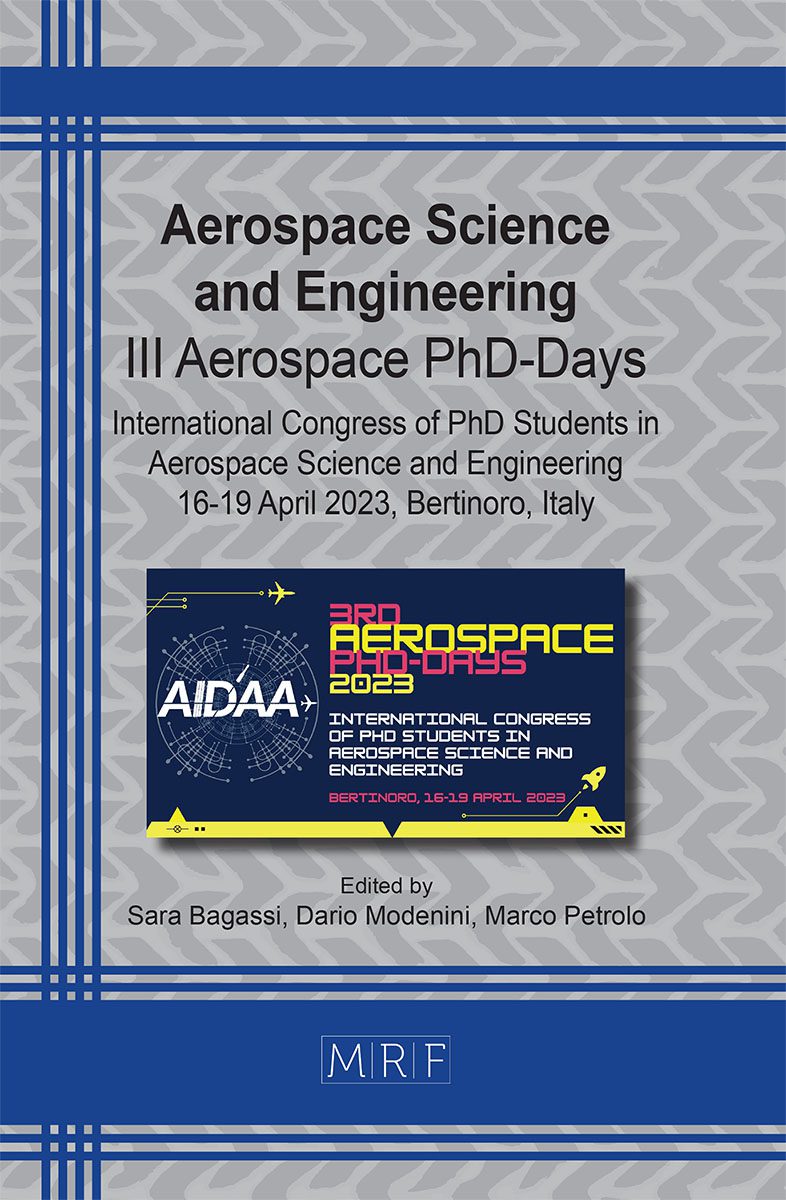Investigation of the space debris environment for a sustainable evolution of the space around the earth
Andrea Muciaccia, Mirko Trisolini, Lorenzo Giudici, Camilla Colombo
download PDFAbstract. The sustainability of the space environment around the Earth is becoming an increasingly important issue in the space sector. Indeed, the space population is evolving over time. Therefore, careful mission design together with mitigation guidelines and policies are essential to regulate its evolution and to avoid the proliferation of derelict objects around the Earth. The main objective of this research is to connect different models that share the same goal: the sustainable evolution of the space environment around the Earth. In this view, the research focuses on the definition of metrics to assess the influence of missions (already occurred or planned) on the space environment and of a carrying capacity that the space can support, and on the characterization of in-orbit breakup events.
Keywords
Space Debris, Space Sustainability, Space Traffic Management, Space Surveillance and Tracking
Published online 9/1/2023, 7 pages
Copyright © 2023 by the author(s)
Published under license by Materials Research Forum LLC., Millersville PA, USA
Citation: Andrea Muciaccia, Mirko Trisolini, Lorenzo Giudici, Camilla Colombo, Investigation of the space debris environment for a sustainable evolution of the space around the earth, Materials Research Proceedings, Vol. 33, pp 61-67, 2023
DOI: https://doi.org/10.21741/9781644902677-10
The article was published as article 10 of the book Aerospace Science and Engineering
![]() Content from this work may be used under the terms of the Creative Commons Attribution 3.0 license. Any further distribution of this work must maintain attribution to the author(s) and the title of the work, journal citation and DOI.
Content from this work may be used under the terms of the Creative Commons Attribution 3.0 license. Any further distribution of this work must maintain attribution to the author(s) and the title of the work, journal citation and DOI.
References
[1] ESA Space Debris Office, “ESA’s Annual Space Environment Report,” 2022. [Online]. Available: https://www.sdo.esoc.esa.int/environment_report/Space_Environment_Report_latest.pdf.
[2] Bastida Virgili B., Krag H., “Strategies for Active Removal in LEO”, in Proceedings of the fifth European Conference on Space Debris, ESA Communications, ESA SP-672, CD-ROM, ESA Communication Production Office, Noordwijk, The Netherlands, 2009.
[3] Bastida Virgili B., Krag H., “Active Debris Removal for LEO Missions”, in Proceedings of the sixth European Conference on Space Debris, ESA Communications, ESA SP-723, CD-ROM, ESA Communication Production Office, Noordwijk, The Netherlands, 2013.
[4] Lewis, H.G., “ACCORD: Alignment of Capability and Capacity for the Objective of Reducing Debris”, FP7 Final Report, University of Southampton, 2014. URL: https://cordis.europa.eu/docs/results/262/262824/final1-accordfinalreportsection4-1.pdf.
[5] Rossi A., Valsecchi G. B., Alessi E. M., “The Criticality of Spacecraft Index”, Advances in Space Research 56(3):449-460, March 2015, doi: 10.1016/j.asr.2015.02.027. https://doi.org/10.1016/j.asr.2015.02.027
[6] Letizia, F., Lemmens, S., Virgili, B. B., Krag, H., “Application of a debris index for global evaluation of mitigation strategies,” Acta Astronautica, Vol. 161, pp. 348-362, 2019. https://doi.org/10.1016/j.actaastro.2019.05.003
[7] M. Romano, A. Muciaccia, M. Trisolini, P. Di Lizia, C. Colombo, A. Di Cecco e L. Salotti, “PUZZLE software for the characterisation of in-orbit fragmentations”, 8th European Conference on Space Debris, Darmstadt, Germany, Virtual Conference, Apr. 20-23, 2021.
[8] R. L. Andrisan, A. G. Ionita, R. D. Gonzalez, N. S. Ortiz, F. P. Caballero, and H. Krag, “Fragmentation event model and assessment tool (fremat) supporting on-orbit fragmentation analysis,” in Proceedings of the 7th European Conference on Space Debris, 2017.
[9] S. Frey, C. Colombo, and S. Lemmens, “Advancement of a density-based debris fragment model and application to on-orbit break-up localisation,” 36th IADC Plenary Meeting, 2018.
[10] A. Muciaccia, M. Romano, C. Colombo e M. Trisolini, “In-orbit fragmentations localisation: study and characterisation of the events”, 16th International Conference on Space Operations, Cape Town, South Africa, 2021.
[11] L. Dimare, S. Cicalo, A. Rossi, E. M. Alessi, and G. Valsecchi, “In-orbit fragmentation characterization and parent bodies identification by means of orbital distances,” in Proceedings of the 1st International Orbital Debris Conference (IOC), 2019.
[12] Su, S.-Y., and Kessler, D., “Contribution of explosion and future collision fragments to the orbital debris environment”, Advances in Space Research, Vol. 5, pp. 25-34. https://doi.org/10.1016/0273-1177(85)90384-9
[13] Flegel, S., Gelhaus, J., Möckel, M., Wiedemann, C., and Kempf, D., “Maintenance of the ESA MASTER Model”, Final Report, 2011
[14] ESA, Discosweb, https://discosweb.esoc.esa.int/objects.
[15] Wayne Nelson (1969) Hazard Plotting for Incomplete Failure Data, Journal of Quality Technology, 1:1, 27-52, DOI: 10.1080/00224065.1969.11980344 https://doi.org/10.1080/00224065.1969.11980344
[16] L. Giudici, M. Trisolini, Colombo, “Phase space description of the debris’ cloud dynamics through continuum approach”, in: Proc. 73rd International Astronautical Congress, Paris, France, 2022.
[17] T. Kelso, F. Hoots and R. Roehrich, “”Spacetrack report no. 3-models for propagation of norad element sets,”,” NASA, Tech. Rep,, 1988.
[18] C. Colombo, “Planetary orbital dynamics (PlanODyn) suite for long term propagation in perturbed environment,” in Proceedings of the 6th International Conference on Astrodynamics Tools and Techniques (ICATT), Darmstadt, Germany, Mar. 2016.
[19] V. Zappala, A. Cellino, P. Farinella and Z. Knezevic, “Asteroid families. I. Identification by hierarchical clustering and reliability assessment,” The Astronomical Journal, vol. 100, p. 2030-2046, 1990. https://doi.org/10.1086/115658
[20] G. F. Gronchi, “An algebraic method to compute the critical points of the distance function between two keplerian orbits,” Celest. Mech. Dyn. Astron, vol. 93, pp. 295-329, 2005. https://doi.org/10.1007/s10569-005-1623-5
[21] NASA, “Proper implementation of the 1998 NASA breakup model,” Orbital Debris Quarterly News, vol. 15(4), p. 4-5, 2011.












